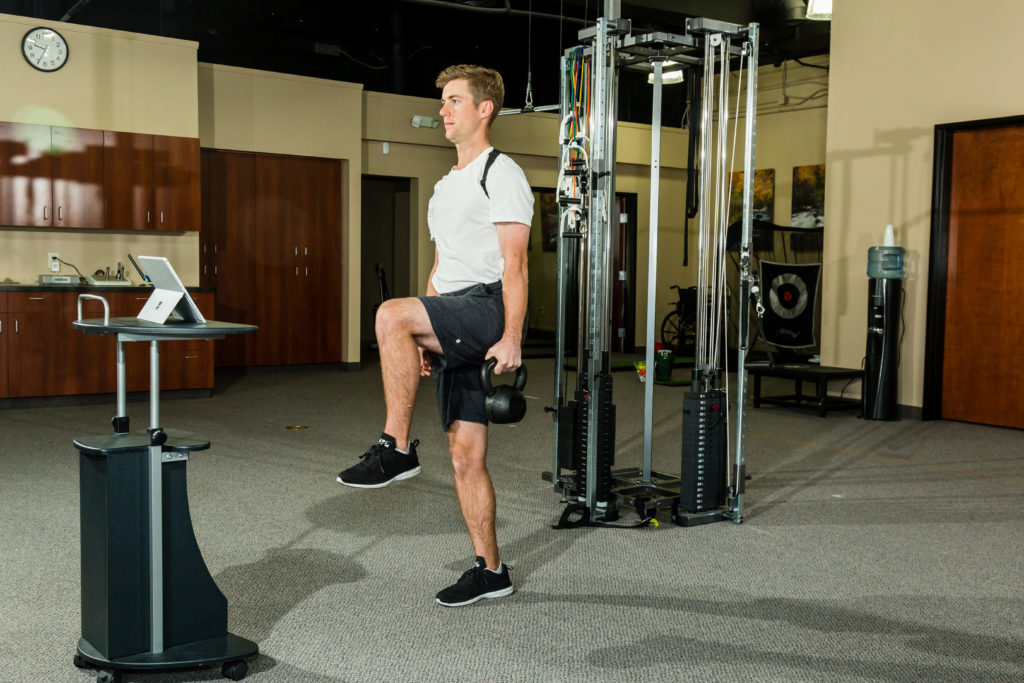Learn from one of the leaders in the field of golf fitness, Lance Gill, as we discuss his thoughts about the Measure, Assess, Coach, and Train process. He shares his methods for assessing players, including the area in which he thinks the industry is missing a critical component, and his thoughts on the most effective ways to train new movement patterns.
Thank you for all of the great questions you had, and we received a bunch of great replies in our K-VEST Certified Facebook group and on Twitter, which we’ll go through in this conversation. Make sure to follow along, so the next time we interview one of the leaders in the field you can get your questions answered.
Questions Answered:
- What are the main differences between the top tour players and the top amateurs?
- I would like to hear how Lance decides what to tackle first; for example, if you have an “over the top” slicer, you probably wouldn’t take away their early extension, but would he rather work on the pelvic side bend? How does he prioritize?
- How do you prioritize your analysis, as in what is your process for evaluation/analysis?
- I would like to know his process as to how he introduces new patterns and strengthens existing motor patterns using biofeedback.
Main differences between top tour players and top amateurs?
One of the most decisive factors between top ball strikers and mediocre ball strikers is an early extension pattern. With the advent of the 6DOF system on K-VEST, it’s now easy to measure and assess this pattern. Anything over 1 inch would be considered excessive.
How do you prioritize your assessment and analysis?
Lance talks about always looking at the physical and biomechanical limitations and the importance of using K-VEST to get quantifiable data on the movements and patterns. Through this process, he’ll typically find that physical dysfunction is found 80 percent to 90 percent of the time when he starts working with a player.
You have to build evidence against potential problems and start quantifying movement patterns.
We talk about the potential issues of physical screening and assessments becoming a catch phrase. The problem is that most assessments are done under the naked eye or with a 2D video capture. When looking at human performance, it’s nearly impossible to see everything that is going on; however, Lance shares some of the important data you can collect using 3D during assessments.
“If golf professionals get better evidence, they’re going to get better outcomes, which benefits their students and benefits their businesses through better results.”
How do you introduce new motor patterns using biofeedback?
Lance walks us through the process he goes through with students to create new movement patterns and some of the vital mindset shifts you need to have to help students build skills that transfer to the golf course.
Learn why changing from the traditional paradigm of continual feedback from a coach or trainer, to having the student self-organize and find his or her own solutions with biofeedback has increased efficacy. When you’re trying to train a movement pattern, it’s all about quality repetition. Self-evaluating the movement is critical. The goal is to help learners learn to grade themselves.
Check out Lance’s Session During WGFS:
Brian Bradley and Lance talk about obstacle course training and how that can have a direct transfer to golfers and help them become better athletes.
And visit us at the World Golf Fitness Summit K-VEST booth to learn more about how you can start quantifying movement patterns and helping players train more efficiently using biofeedback.
Lance Gill is the Head Athletic Trainer at the Titleist Performance Institute (TPI) in Oceanside, California. His TPI certifications include: Medical Professional Level 3, Fitness Professional Level 3, Golf Professional Level 3, Biomechanics Level 2, and Junior Player Development Level 2. Lance is also TPI’s Director of Player Development and an instructor for the Golf Fitness Academy and the Golf Channel.
He received his bachelor’s degree in Kinesiology from Shenandoah University in Winchester, Virginia, and went on to earn a master’s in Sports Medicine from the University of Pittsburgh, where he worked in the NMRC (Neuromuscular Research Lab) funded in part by Greg Norman. Lance was also one of the lead diagnosticians at Clubgolf Performance Center in Washington, D.C. for more than four years.
Through this experience, he realized that it’s time to change the way golf is taught. After reviewing research and talking with coaches and academics, he launched the Golf Science Lab, a website and audio documentary-style podcast focused on documenting what’s really going on in learning how to play and playing better golf.
